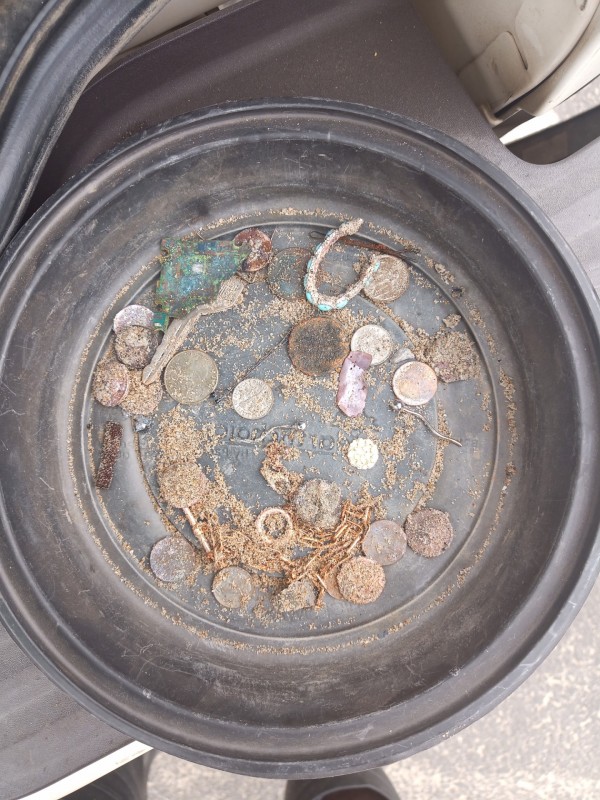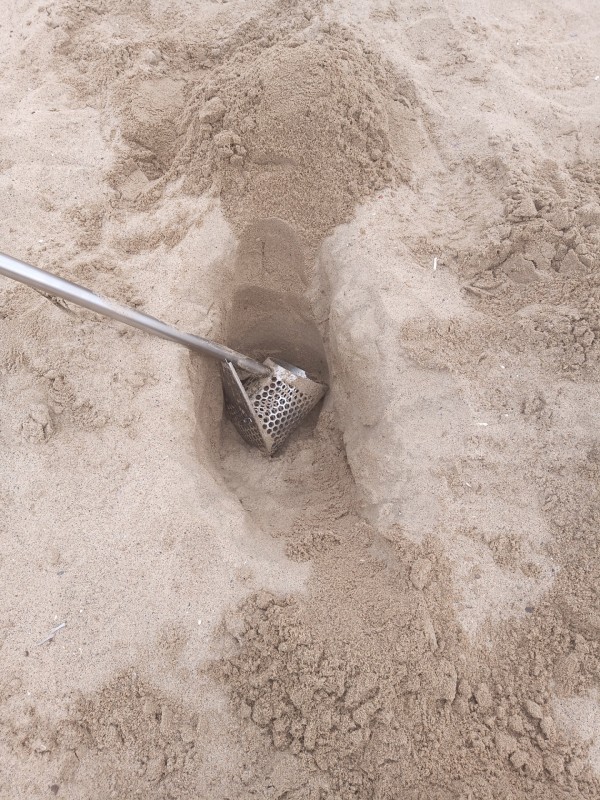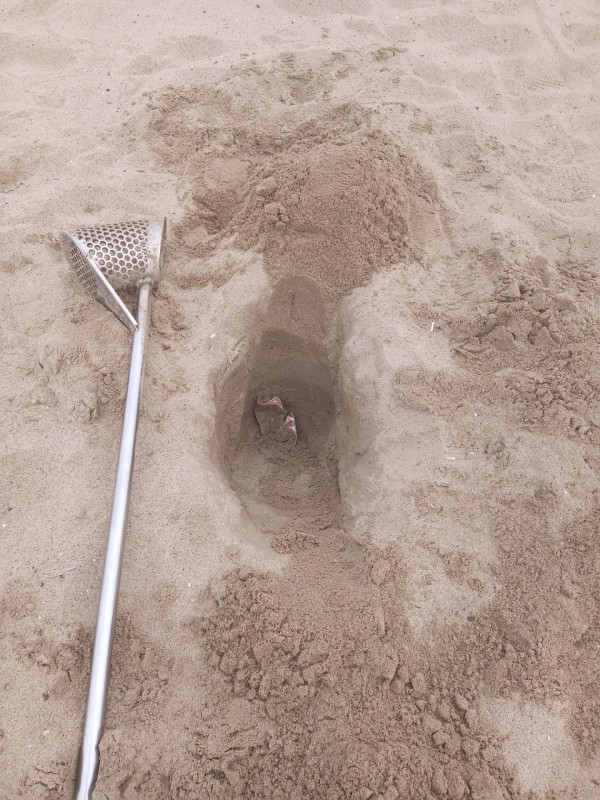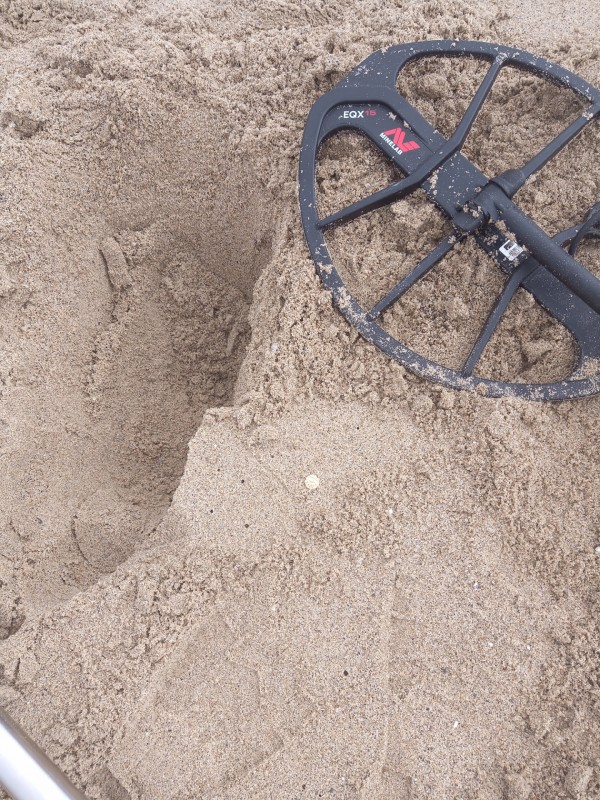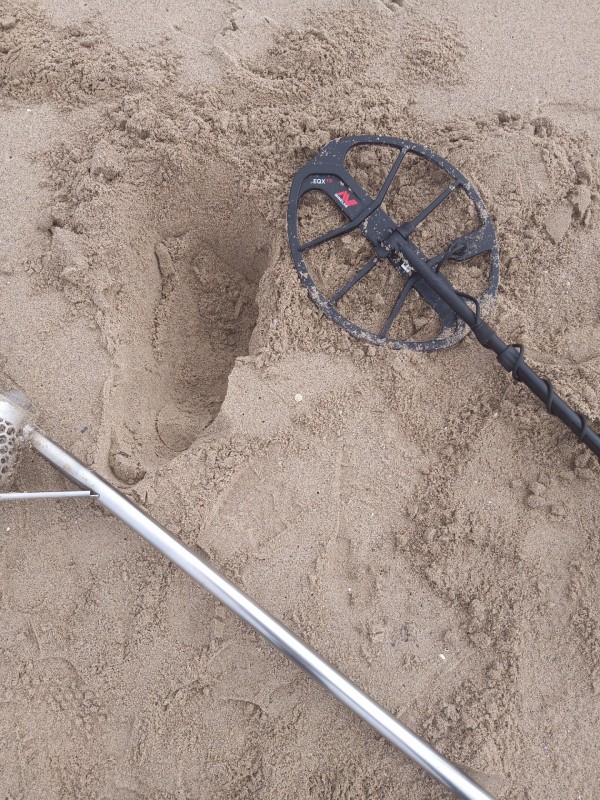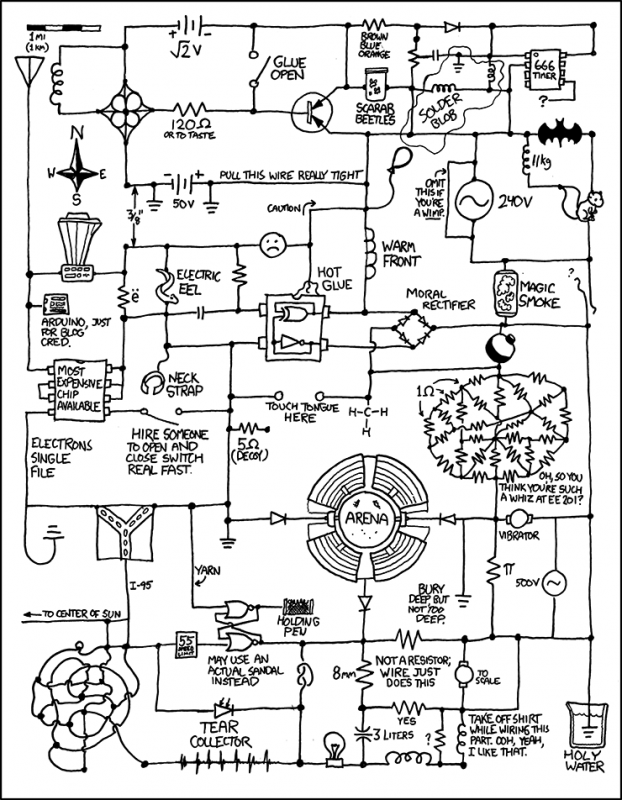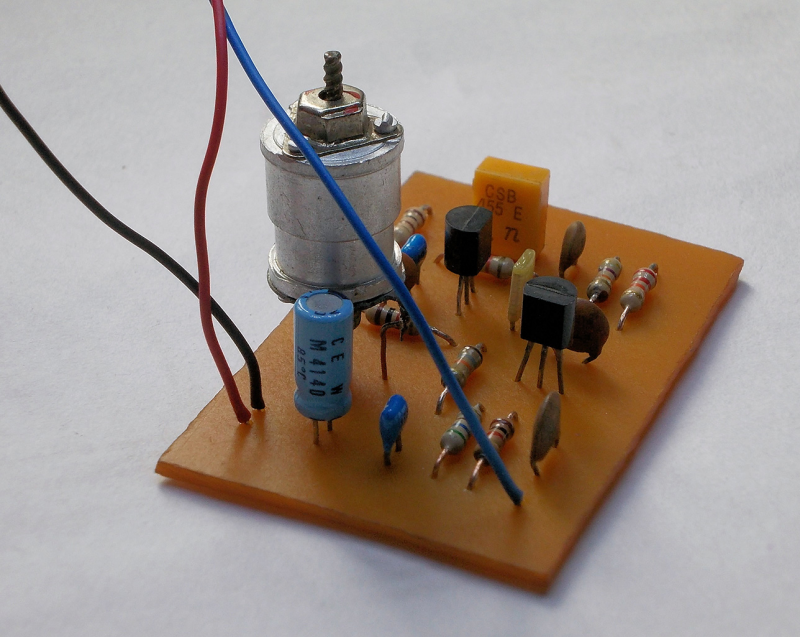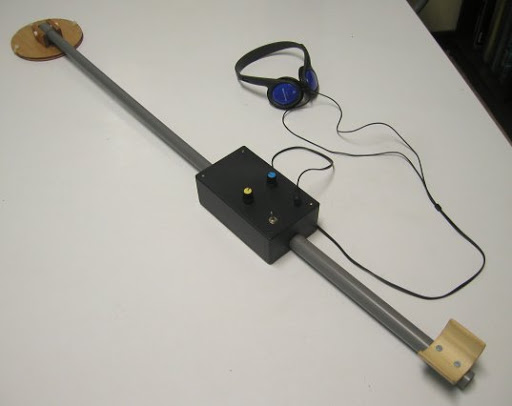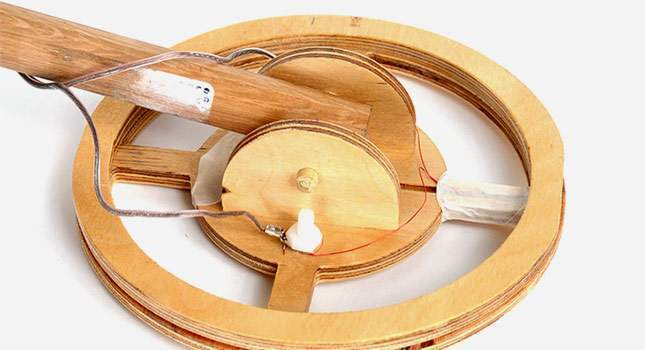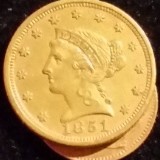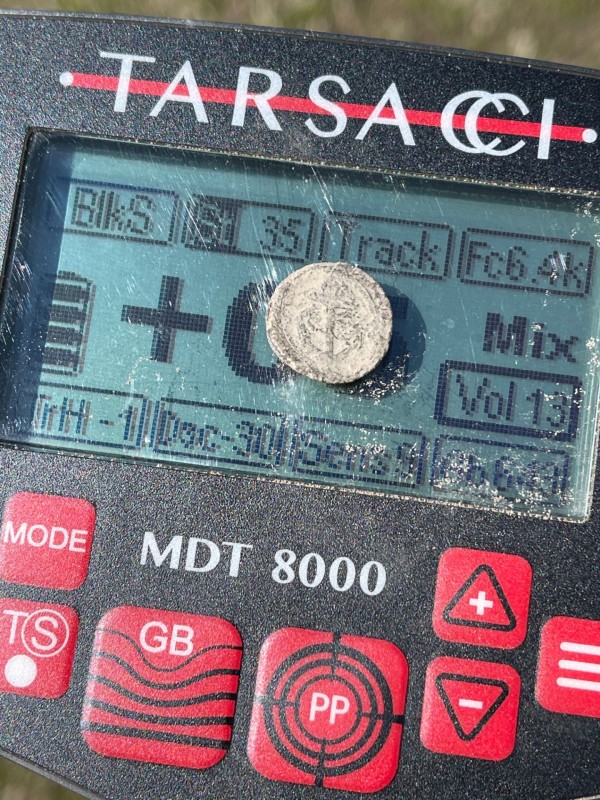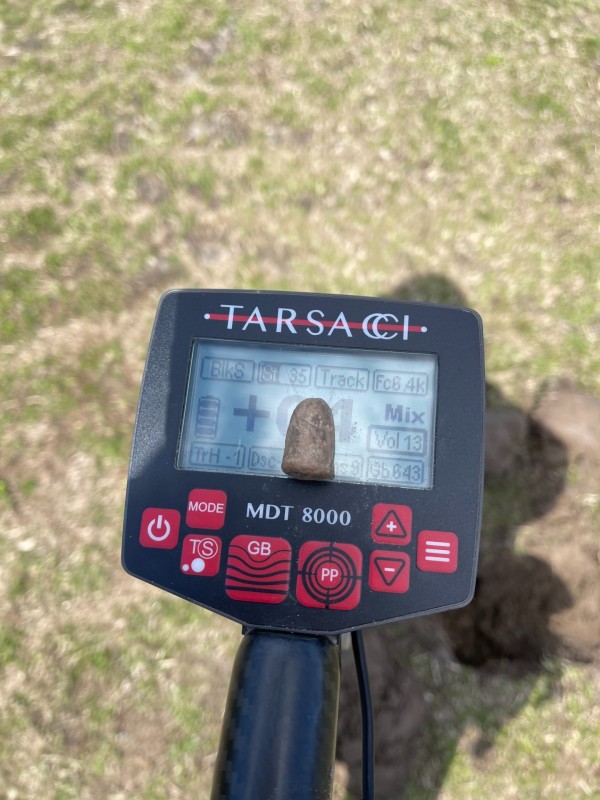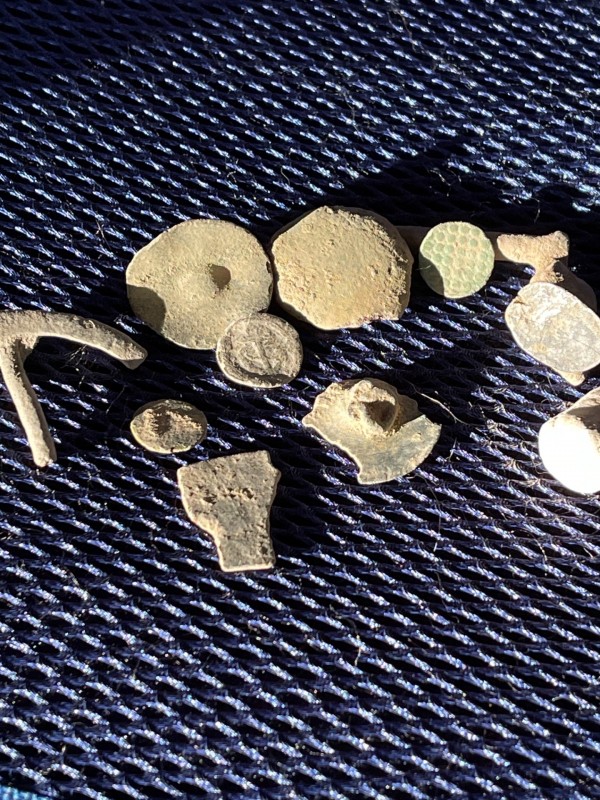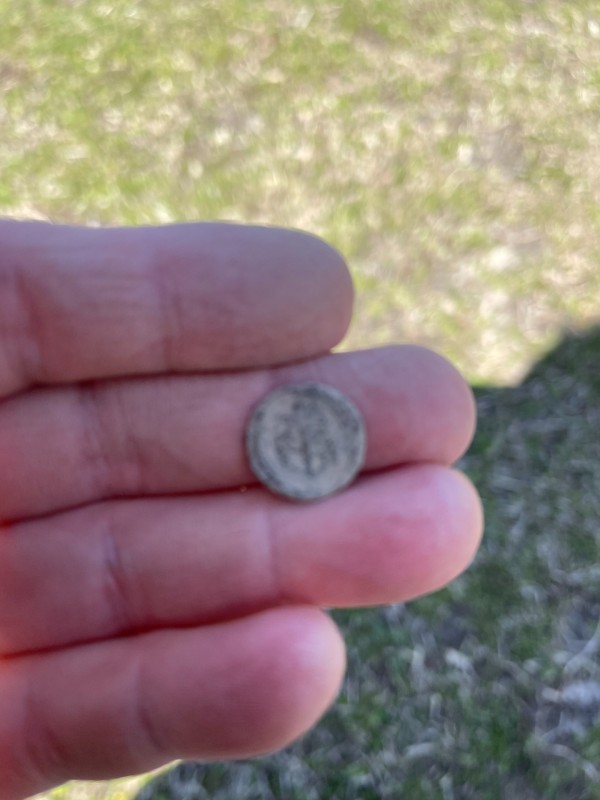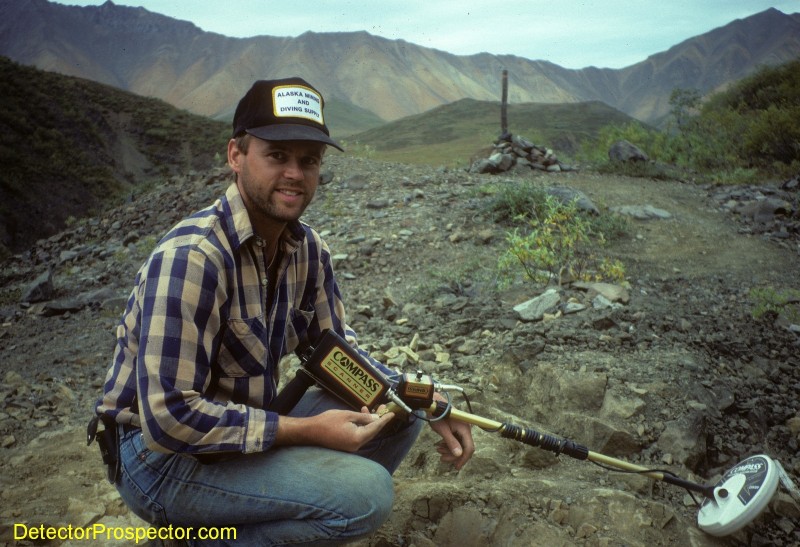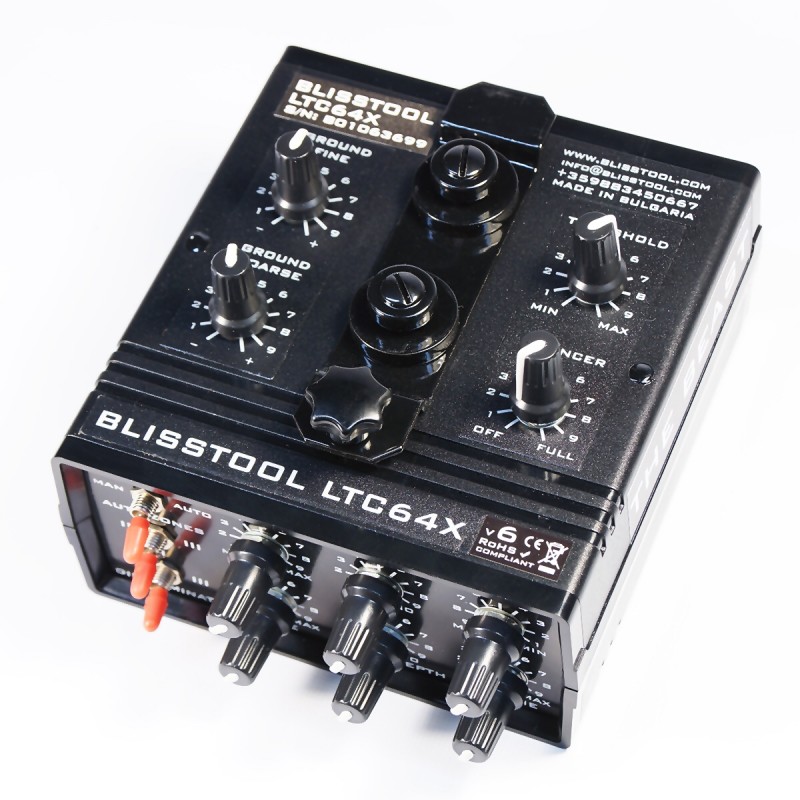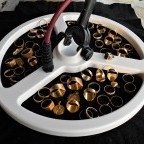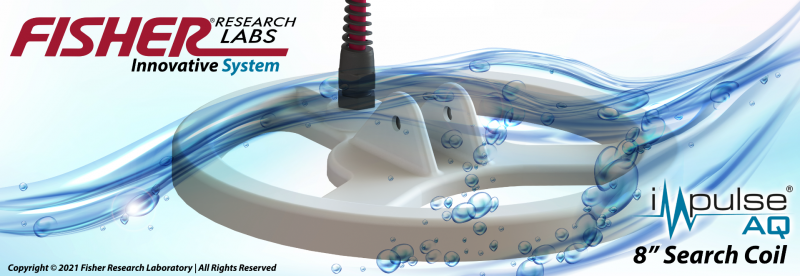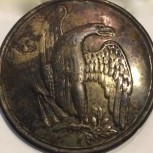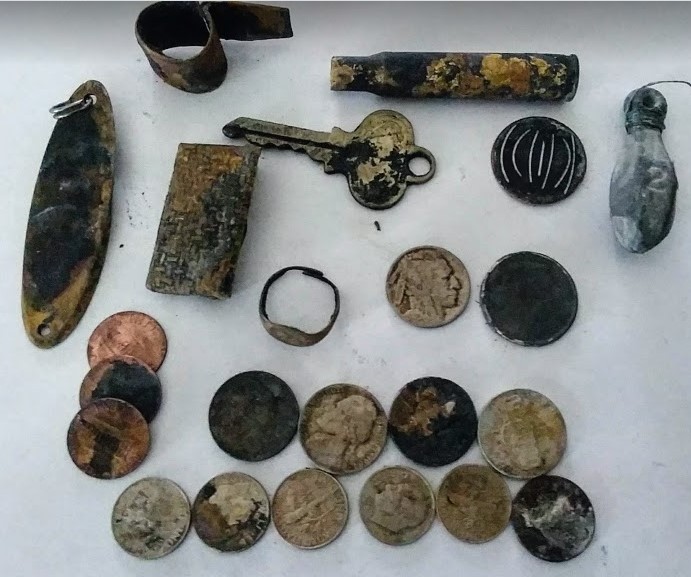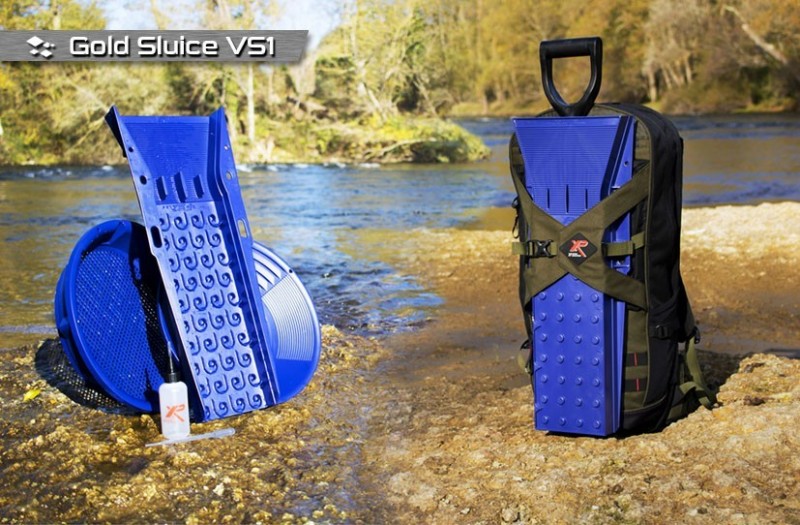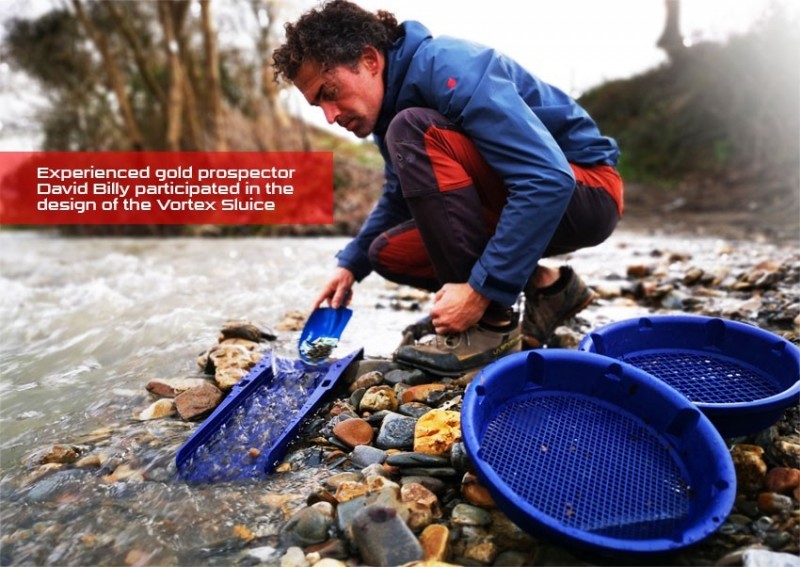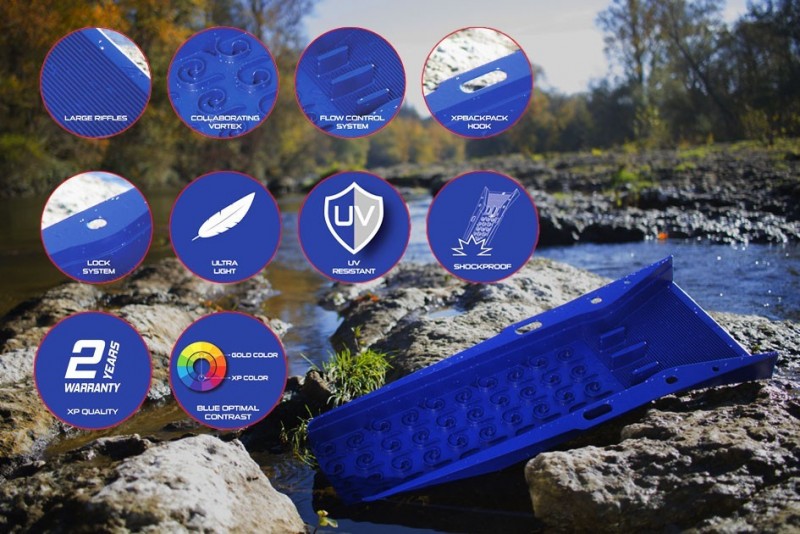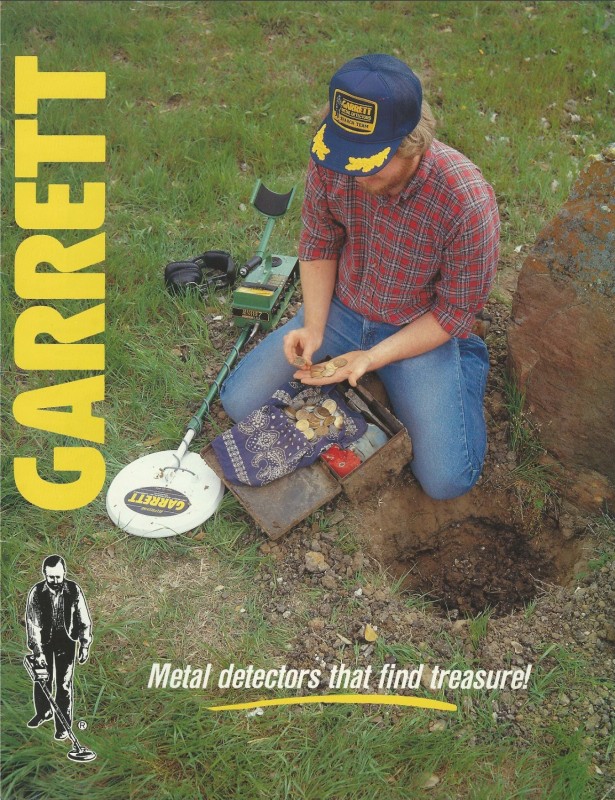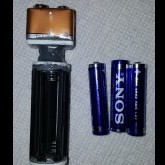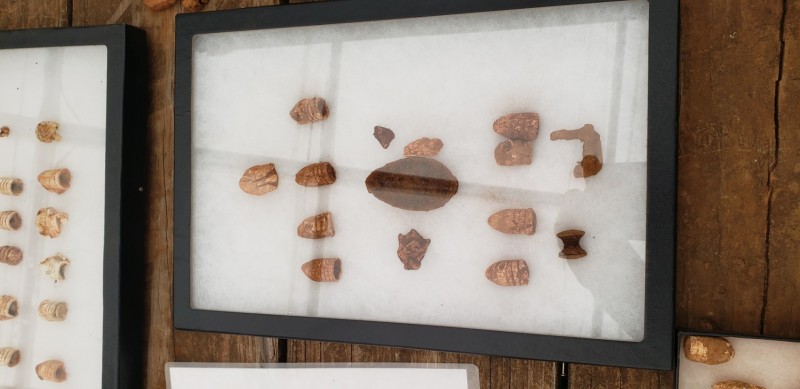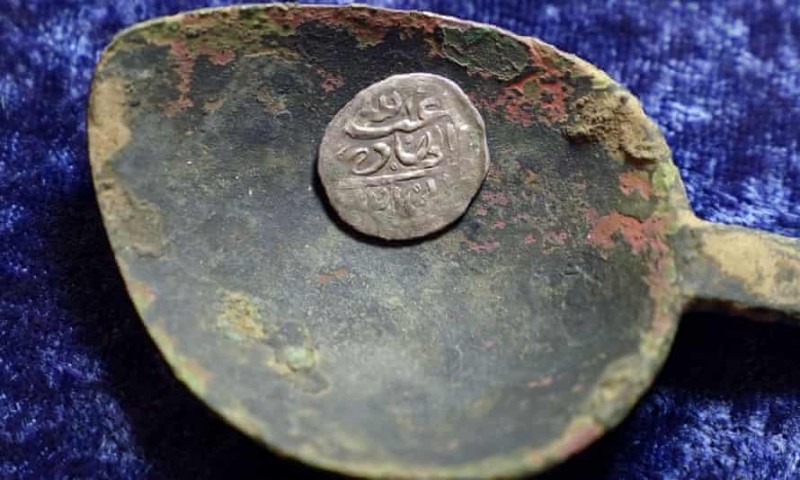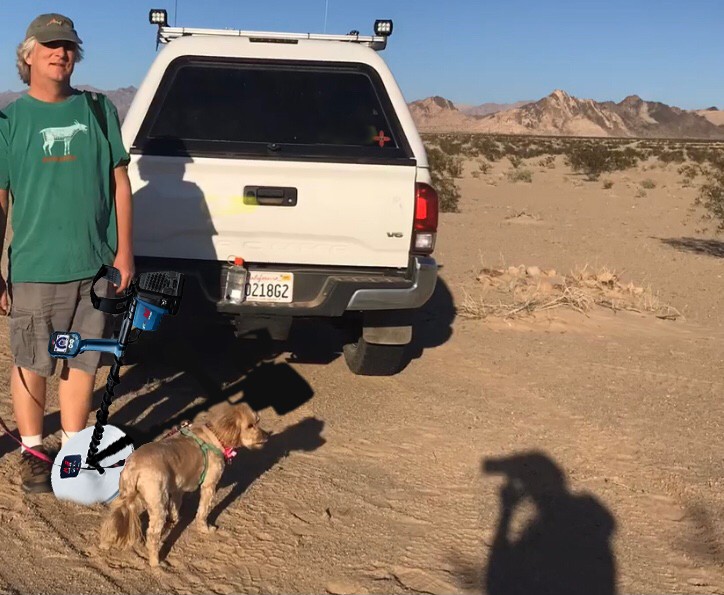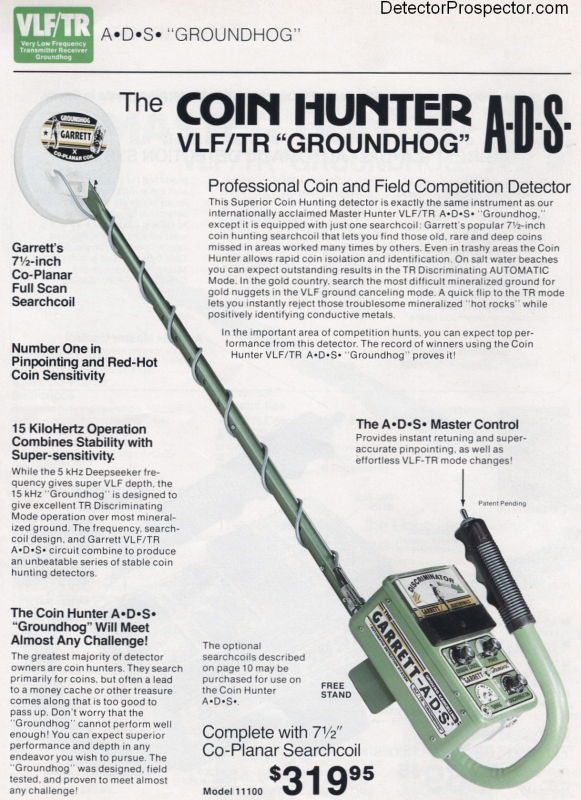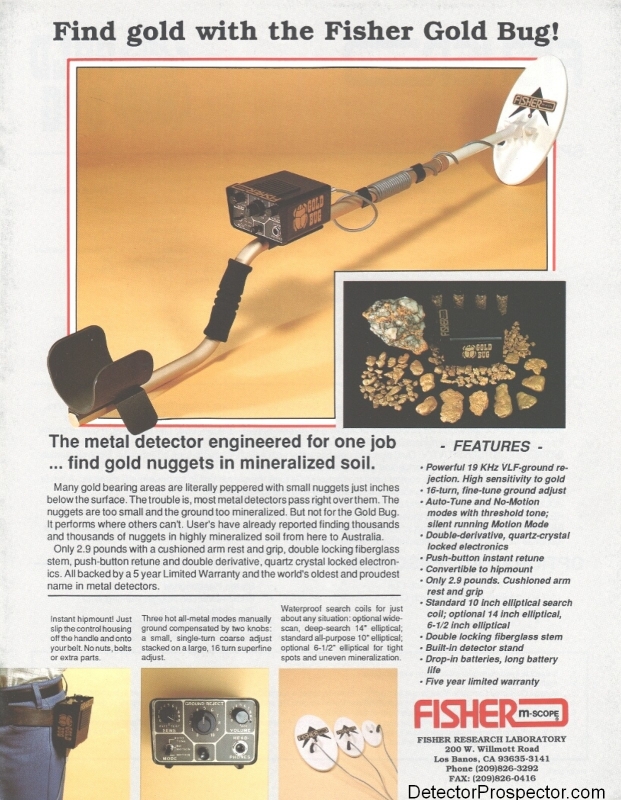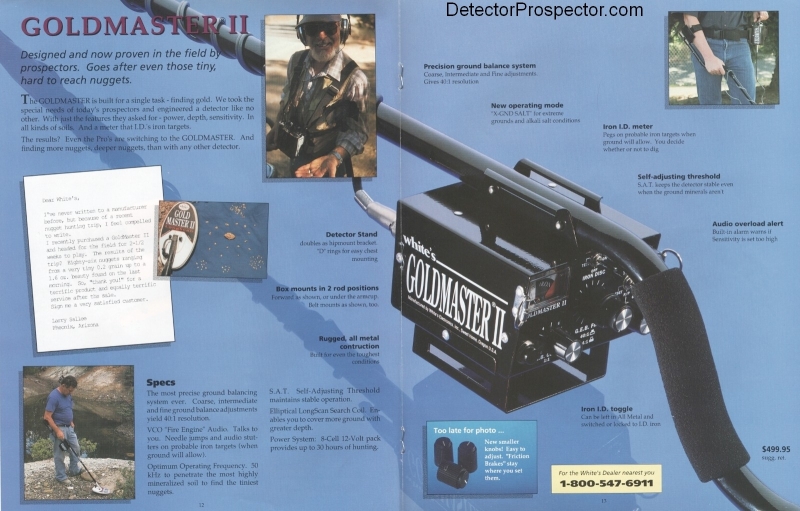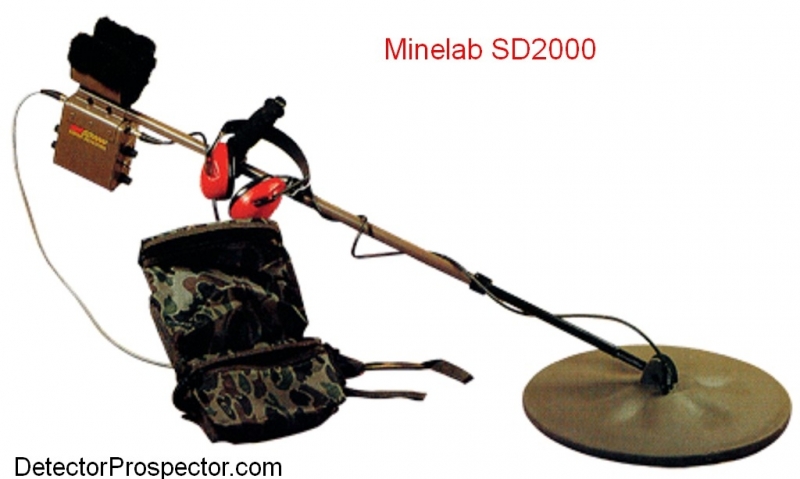Leaderboard
Popular Content
Showing content with the highest reputation on 04/03/2021 in all areas
-
Over on the 6000 threads they are showing a few pictures of attractive detectorists. (You don't need to know how to use a detector in order to be a detectorist.) One picture I saw had been significantly photo-shopped. There is a bit of grumbling about the use of models rather than REAL detectorists. Here is a REAL detectorist. I showed her how to hold the detector and the scoop! What a FIND! I had just a junk chain at this point but I hunted my way back to finish my 2 hour hunt and I got a small little hit. Sometimes you just have to go slow. It turned out to be a 10K .78g (.5 pw) earring at about 6 inches. This is my first gold in a couple of years with the Avantree headphones. They are quite a bit different sounding for me. It affects all the targets I hear and it also affects the pinpointing. I don't know if they are 'better or worse' than the Minelab headphones but they are different. As I was leaving the beach I got an odd signal which became more familiar but you just have to dig them once in a while. It got deeper and deeper so I suspected what it was and I confirmed it. A can at 20 inches or so. This was my haul for the 2 hours. There were a couple of steel earrings about 10 feet apart and a rusty chain which I scooped in half with the big scoop. That is a problem with the tank scoop. It will go through most everything. Be careful out there and never photo shop. Mitchel10 points
-
At this point i think there are two factors hurting the sell of these machines. One.... is they must be near to coming out with the production model. Two.... with a small number out there seems to be several going back for repairs. With no transferable warranty .... anyone want to sell theirs is taking a loss and the buyers are taking a chance. Had they given a transferable warranty more of these may have been passed around and Fisher may have gotten even more info for improvements if needed.7 points
-
I remembered seeing something about this that someone had posted a couple of years ago and finally came across the article. I am re-posting the drawings for those that have more of a eye for the electronic design than I do. I don't know if it can work as they have described but I think that there could be some use for it somewhere.7 points
-
4-1-21, EL PASO, TX. - FOR IMMEDIATE RELEASE- Consolidating the former "Big Three" of metal detecting (Fisher, Garrett, and remnants of White's Electronics) into one cohesive engineering force, the United States manufacturers are aiming to put themselves back on the map with a brand new detecting technology. With Minelab leading technological developments in metal detecting for the past two decades, U.S. companies have struggled to meet the performance benchmarks set by the Australian company. In recent years we have even seen companies that in the past, took the crown of metal detecting, be pushed aside as they were run into the ground by poor leadership or unmanaged engineers who struggled to complete projects. Sources say that this strategic alliance was formed sometime in 2015, when the GPZ 7000 was released and it became clear that Minelab threatened to dominate the world detecting market. Luckily these companies had such great foresight to meet that challenge. "We're really excited to share this technology with the world," said engineering manager Gerhard Fischar. "This new platform has the potential to revolutionize metal detecting for customers across the planet." The new patents show that this unique process involves feeding two oscillators through a low pass filter. This signal is then transmitted into the ground through a coil, which is able to pick up shifts in one oscillator, creating an audible tone for the treasure hunter. Recent FCC filings have revealed some detailed photos, drawings, and specs which follow below. Main circuit board photo, showing sophisticated layout of major components and groundbreaking design: Mechanical design, featuring organically-sourced components and easy-to-operate controls: Detail photo of metal detector coil (NOTE: this is a production model, not a prototype): To release this new detecting technology to the world, the Garrett arm of the company plans to use its marketing muscle and get the machine into the hands of respected YouTube personalities across the world. Steve Moore, director of marketing, said "We've already taken this turn-on-and-go detector out to some civil war sites, and I tell you what, this machine can hunt. Now I won't say who it was, but one of our more popular testers found a shot shell on their first hunt, and seeing that video footage in 4k with all of SUBSCRIBE NOW notifications will make you a believer. And I am pretty sure it wasn't even planted this time." Our office reached out to Minelab about this new competition, a receptionist advised that the engineering and marketing teams were out "crushing tinnies" and unavailable for comment at the moment. An unnamed source provided information on specs of this new detector, which follow below. Name: "RELICMASTER BF-Pro PLUS MAX F97" Price: $849.99 MSRP, $459.83 MAP, $34.21 eBay Weight: 6.7 lbs Technology: Differential Dual-Osc-Sense™ Frequency: 80kHz Batteries: D Cell (12) Runtime: 23 minutes Coil Type: Concentric, 3/4" Plywood Waterproof: IP23 rated, can withstand tears from crying and lint from extended closet stays Release Date: April 2026 Manufacturing Location: Juarez, MX We'll be following up on this exciting development as it looks like the USA is back on the map when it comes to metal detecting.5 points
-
5 points
-
Not sure where this belongs on the forum, (or if it even belongs here), but this seemed to be the best category to discuss this. Ever since information on the GPX 6000 started to trickle out, I had this nagging feeling something in detecting has changed for those of us who like the thrill of getting to know a new detector. I never would have envisioned the GPX line morphing into a simplified detector. After having the GPX 5000 for a bunch of years now, and using it for relic and beach hunting, I could not imagine relying on a machine that adjust everything for you. I get it that money talks, and when you are a publicly traded company, you go for profit first, and then deny it 😄 And now that there market has switched to an area that probably has very little experience with detectors, the GPX 5000 must have been daunting for them. So they cater to that market. But I was hoping that a new GPX would fix some of the issues that the 5000 had. I was naive. Minelab has never kept the good parts of their previous machines and just added the the things that needed improvements. On the E trac, the best part of it was the depth it had in finding deep silver, in long tones, multi. Also the bouncy numbers helped ID deep Indians. When the CTX came out, it lost some of that fluety tone and they tried to straighten out the numbers to a number 12 line. So a two dimensional screen that worked well was transformed into a 2 dimensional screen that bunched most targets on one line. The The EQ comes out and squashes out the numbers even further. So why I thought the 6000 would not do the same is beyond me. I guess I'm disappointing that the "trend" is to make machines where the manufacturer decides on how your machine is going to be set. I hope someone in my area gets a 6000 and is willing to bring it to the beach to compare settings on deep silver. If it wins, then I will eat my words. I know I will get some slack with people saying it's a gold machine, not a relic or beach machine, but to them I would say.... you should be worried when a company controls your ability to fine tune your machine. Thoughts?4 points
-
Valens how did you get the GPX-6000 schematic drawing it is highly protected, since you have displayed it, here is a photo of the proto type being test in Leonora WA caravan park. Note the small nugget in the photo that it can detect. 😀4 points
-
My opinion on detecting now or in the future is simple. No mater how much technology changes there will always be someone out there detecting just for the fun of it. Through out the years there have been many changes to the design of metal detectors and there will always be changes made to them. The best is yet to come from the factories who are smaller as they are the ones that are hungry for a bigger market share. I see items being found long after I am gone with detectors. People want to find things with any type of tool that they can get, a pick, a shovel, and even a detector. We love the challenge and that is what makes us unique.4 points
-
I'm looking for a Compass metal detector catalog that includes the Compass Gold Scanner, and Compass Gold Scanner Pro models. The full line catalog, and this would be about 1990-1992 or thereabouts. I'm adding a few key older metal detector catalogs to the Downloads Area to provide basic info on older models. I do not need a ton of catalogs, just key years where major model changes occur, as things moved slower back then. If the catalog was in pdf format that even better, but Googling only turns up a couple older catalogs, nothing I can find covering the Gold Scanner era. I am more than happy to pay for a print version if need be, so I can scan into pdf and put up for people to download. Thanks in advance for any help. Me and my Compass Gold Scanner, back around 1990:3 points
-
I probably didn't word it correctly. I'm not asking for more controls for the sake of controls. What I was poorly trying to say is that removing too much from us leaves us vulnerable to no options if the machine, for some reason does not work in my area. Even though it says all gold, all soils, all the time, I'm a bit hesitant to give all the control to automated features. Even though the 5000 has a lot of combinations in it, I can say for sure that the 4800 would not do for me what the 5000 does because of the 5000's extra timings. The Blisstool 😆 that is an example of what I don't want. Even when it came out it was a no go for me. After watching one video that was supposed to make it look good, I saw things that I did not like. Anyways, my point was that if it works, I will eat my words, but if it doesn't work as advertised, you spent a lot of money, and can't do anything about it. If the Equinox did not have single frequencies, I would not have been able to continue some of the archaeology projects I was on, due to EMI. It was an option that made the difference in success or failure. I hope it does work for all the gold guys that can find great things without any need for different settings.3 points
-
I’m a little surprised anyone still wants an Limited, when a vastly improved version is said to be right around the corner. Everyone must be taking the threat of a big price jump seriously. Frankly, I’m not. They can try and charge a ton of money for the final version, but that does not mean people will pay it. Right now the average price paid for a beach detector must be awful close to $900. The Ltd is $1500. Would I pay $1999 for one that is done up properly? Sure. $2500? Not so sure, it’s still just a PI, maybe a powerful one, but a PI, and it’s not twice as deep as a $1200 Beachhunter TDI. And that non-transferable warranty does not help. $2999? Good luck, no way. So might a new final Impulse AQ Unlimited cost $500 bucks more? Sure, and I’d gladly pay that to get it right. But if Fisher goes for more than that then it seems to me it will be going against creating an affordable option, which was one of the early promises, with plenty of snark aimed at certain companies that charge through the nose for their detectors. That being the case, I just do not see it being worth it to get a Ltd at this late stage of the game. But that’s just me obviously, and there will always be a few who want to save that buck.3 points
-
Are controls for controls sake the desire? I thought we wanted performance? If performance can be had with fewer controls, why would you want more controls? In my opinion the premise is flawed i.e. more controls equals better performance. If that were true that machines were being dumbed down and less effective, it would be a scary thought, but I do not accept that it is true. A machine can have fewer controls, be more powerful, and get better results, than a machine with tons of controls. The 5000 is an excellent example of people getting poor performance due to complexity, because half the people running the detector are using various timings, with little or no understanding of what they are doing. They are using Fine Gold because they think it’s the best mode for fine gold (it’s not), or because somebody on the internet gave them canned settings. Using a machine that is not set properly is not a good thing, and few people could swear the settings they have with the 5000 are correct. In fact, they cannot be correct, as no one setting in the 5000 captures the gold in one pass, that takes multiple passes with multiple settings. I do not find that desirable, but a time waster. The GPZ was a big step in both reducing the number of controls, while vastly improving the number of targets found on the first pass. Count me in for more power and performance, but I do not vote for more controls, but fewer. In other words, this photo below is not what I think I want, but if more controls are better, this is a real winner. Or how about a Whites V3i? It has way more controls than a GPX 5000, so it must be more powerful, right? Long story short, as a guy involved in the development end.... no, we are not trying to figure out ways to add more controls, and make the detectors more complex. That would be going backwards, not forwards. But do not worry. You will be able to buy detectors with as many controls as you want for as long as you want them. No matter which way the wind blows, machines will get better at finding stuff, not worse. Not the goal as far as I am concerned....3 points
-
I think in general companies strive for automation and simplicity to attract new customers rather than cater to the needs or wishes of existing seasoned customers where the sale is over. Seems like Nokta still tries to listen to customers wishes and wasn't too long ago Garrett had a questionnaire for a wish list of features. The rest of the companies, feature requests seem to fall on deaf ears and they just do their own thing. You would think it would be wiser to listen to existing customers and put in the features they want as many new people to the hobby are attracted to the hobby from existing users and learn from them.3 points
-
Step back ~70 years and ask the same question about automobile transmissions (automatic vs. manual). We still have both available although automatics dominate the market. Auto racing experimented with automatics in the 1970's but AFAIK the current top-of-the-line racers still use manual trannies. (Well, some of those have pushbutton shifters....) So the new tech hasn't performed as well as the old at the very pinnacle of performance demand. Or back ~30 years and the introduction of Graphical User Interfaces (GUI's) to replace command line processing (remember MS-DOS?). LINUX/UNIX (with both options) is thriving, admittedly with a small market share. One thing I've noticed from the sidelines (but it's been emphasized in other threads, by Gerry and others) is that for once we enthusiasts aren't the catered to buyers of the newest state-of-the-art detector. ML might have been satisfied to just sell the GPX 6000 Africa -- its apparent primary market. One big difference (of many) between autos and detectors -- automobiles have never been dominated (that is, monopolized) by a single company so competition prevented what you envision. I guess we'll know eventually if your Orwellian nightmare becomes a widespread reality.3 points
-
Agreed. I too have moved up from the old machines, (hence trying the AQ) not just because they were new, but because they worked better. My fear is that the future will limit who decides what works better. I've noticed that when a manufacturer breaks into the market, they are very willing and eager to make the best machine possible. But after a while it seems they are more worried about market share and not as much about quality or what we are looking for. So let me pose a question to anyone who has the 7000: Do you feel you could have gotten more out of the 7000 if it allowed you more control and more choices than it offered you. In other words, if it had some or most of the GPX controls and options, do you think it would have allowed you to gain more gold? How about if you were allowed after market coils?? I'm sure the 6000 is going to find many good homes and probably some that will not like it, but at the prices they are now going for, trying one out to see if it's good, is out of the question for most people. Technology always moves on and that is a good thing, but limiting choices counteracts that technology in a way. I hope it is a great machine, but we can only wait and see as always. The proof comes out when some of the most experienced gold people get their hands on it. If they like the lack of adjustments, and it produces gold in worked out areas or trouble areas, then we know it's real and not just fancy advertising.3 points
-
Yes this is the new clamp system. The ears system on the 12.5'' search coil is for me perfect, but it's an injection mold. The search coil 8'' was made with the vacuum forming method for reduce the costs, so it's not possible to apply the 12.5'' ear system. You can note that the ears have been partly hidden in the thickness of the search coil, this improves the water flow around the search coil, also this increases the stability in the water compared to the conventional search coils of competitors.3 points
-
99.9% of my hunting is and has been done on saltwater beaches for many years...to include shallow water. Over those years, I've used the CTX, Excal, EQX 800, XP Deus and a PI. Bottom line: The PI drove me crazy digging the deep trash that one finds all over the beach and the selectable frequency Deus is not a true beach machine compared to mutli frequency Minelabs . I'll stick with the CTX or EQX for dry, wet and shallow water and the Excal for deeper hunting...regardless of coil size. Just the view from my beachy foxhole....YMMV3 points
-
I think Minelab would need to knock about 6k off the retail price of the 6000 for that to happen... 😉3 points
-
Nice find, Tarsacci is great on thin silver coins or worn out buttons. I use 18k mode when relic hunting, tends to enhance signal on worn thin silver coins, 1/2 dimes and worn silver reales. Conductively is lower on older small silver coins or brass buttons, Especially the tiny ones. 18k will enhance these signals, give it a try. Congratulations! Paul3 points
-
I don't know what to tell you other than markets and technology move on. I think the people at Minelab which have been there from the beginning and the new people that have been added make for a mix now that still produces quality detectors from a marketing and technological standpoint. There are not too many people who would 'trade back' the latest detector for an old one if they have had a chance to use the new ones. I still have all my old ones that I don't use any more ... or at least not much. You enjoy a 'sweet spot' of using a powerful detector (the 5000) and most admit the number of adjustment on it are daunting. I have one too. (I also had one of the AQs like you have but sold it. So I'm not only stuck on Minelab.) When the 7000 came out (it was not a continuation number) I stopped using my 5000 but I'm also aware that the 7000 does not make a good relic detector. I can't use it at the beach either. Maybe this 6000 should have been named something else like Gold Demon then there would be 'less' expected of it as a continuation of a line of detectors. I'm certain that the 6000 will find its fans and its gold or Minelab would not put out such a high end detector. Their 'new' market has to be younger people than us with a few extra thousands to just take a couple of weekends a year and go out and find several ounces of gold. It may happen. Look at all the new finds in England this past year with the lockdowns. The 'proof' in the 6000 will be its ability to ignore bad ground conditions. If you can 'turn it on and go' as a high end machine like a Vanquish then they are one step closer to the holy grail. This means it will ignore salt, mineralization, hot rocks and other impediments to gold prospectors. I hope there is someone like you who will make it work for relics too and it can be made to ignore iron but I haven't read much about that. Maybe with fewer adjustments it will just be a better detector for more than just gold.3 points
-
Went out to 2 different beaches for a mix of GPX and AQ hunting. Tony repaired my headphones for the AQ and also made me a spare set , along with 2 short cables, so I could zip tie the short cable to the machine, and so I would not break the M8 connector. The short cable also converts the M8 to an M12, a more robust connector going to the headphones. So, for the first AQ hunt in a while, I chose my “spot” to see if I could find any low conductors where the GPX had previously run the 18” DD coil. I did not find any coins in that area, but did find little bits of melted copper and lead. So, I ventured out a bit and found the silver Washington quarter,Mercury dime and all the rest of the other coins. I Later met up with a forum member - Jim in ma, at one of his spots. Thanks for the invite up there. 👍 I used the GPX to see if I could replicate the depth and coin count that I have had previously at my silver beach. This beach was smaller in the dry sand area, but the EMI was considerably less. The sand structure was different too, as I did not hit a clay layer or any of the other layers I was used to. But the principle was the same, and I did score a decent number of coins including the Mercury, silver war nickel & .925 ring. All in all, it was a fun time out.3 points
-
THANK YOU SHN for letting me get my feet wet with the AQ. The part I had the most trouble with was pinpointing a shallow target once I got the target out of the hole, being chest deep and digging in running sand I dont have the time to check each scoop, I dig and dump piles next to each other so when I go back to check witch pile the target is in I can now judge by the strength of the signal witch scoop pile it should be in. Missing in the pic is a silver wave ring that has already been claimed. Joe you have helped many others including myself keep it up, Thank You3 points
-
From https://www.xpmetaldetectors.com/metal-detector/gold-prospecting/ THE GOLD SLUICE VS1: DYNAMIC SELF-CLEANING VORTEXES! 40 vortexes work together to capture gold via an innovative dynamic process that avoids aggregate saturation. Large Riffles Top zone designed for initial gold grain capture Allows a quick visual check of the potential of your gold field. Flow Control System & Collaborating Vortex 3 vertical blades coupled with lateral constrictions Stabilise and accelerate water flow, improving dynamic vortex performances. Ultra Light: 560 g. only Compact design: Molded with precision in France No mats, no screws : Saves time and efficiency in the field XP BACKPACK 280 hook Blue color : optimal contrast with the gold color Take your gold hunting to the next level!2 points
-
Hey, right now even though I got a lot of hours on the Standard coil, I still got a bunch to learn. In most areas it's very hard to come up with a Gold Ring while mud hunting. (Unless you got a hot lead) I went a little over 2 years without, until last year when I came up with 3 out of the mud and 1 wading. This is with the same machine I went dry with for 2 years plus. A guy can get some serious doubts about his hunting in that length of time. That's Buckets of tabs & Alum slaw. Was it me , my machine or the law of averages? I'll say this, 3 of those rings came from practically hunted out ball fields. I mean it would be a challenge to dig a dozen tabs in a couple of these sites. So as far as this type of hunting "Gold is where you find it" As it's going right now, Silver jewelry is popping up now and then, cause it's there. I'll be getting the 12 inch in a couple of months to go over what I've been going over. A guy gotta give himself an edge, don't be.2 points
-
Not a matter of not having more controls but the right controls. A turnoff for me is having a machine everyone else has that is so automatic that just leaves the chance of finding something just a matter of walking where they didn't. Removing the skill factor takes a lot away from the hobby for me.2 points
-
The biscuit tin model ...nice! Does the rotor spin when it detects gold or diamonds? In the US we use a spam can. No biscuits here only cookies. 😢 Sadly with the smaller and smellier tin we use in the US our detecting is very limited to only 44 meters in depth.2 points
-
That was going to be the title of my post ... FIND OF THE YEAR! haha2 points
-
2 points
-
Thanks to a generous donation from GB_Amateur (thanks Chuck ) we now have a full color copy of the 1986 Garrett catalog available for download I'm not shooting for every year, but I am putting a few key older catalogs into the Downloads Area. These cover ranges of older machines, and have at least basic specification information for those who are looking. An older catalog every 5 years or decade will do the trick, just to catch major lineup changes, which were slow to come back then. Anyway, its a lot of work to scan a catalog into a pdf, and Chuck did a great job for everyone's benefit, so thanks again Chuck!! Garrett 1986 metal detector models: Master Hunter 7 Master Hunter 5 Freedom 3 Freedom 2 Freedom 1 Freedom Ace Beach Hunter AT3 Gold Hunter American AM-2 Master Hunter DS Sea Hunter XL500 Sea Hunter XL200 Accessories2 points
-
Gold is heavy, so put any obstruction in its way, and some will get caught. Then the designer points at the gold that was caught, and declares the design 100% efficient. Except that all sluice boxes lose gold, so the real question is what is the gold loss.... and that figure is of course never available. As a placer recovery guy, just color me as very skeptical of 100% plastic designs with cute gimmicky catch systems. The odds of riffle blowout are incredibly high with these designs. What these really are is gold pan alternatives, more for light prospecting and quick checks, not actual production work. Personally, I’d stick with the gold pan until I need a real sluice, and that one is aluminum, steel, and carpet.2 points
-
They know this too and, as far as rumors go, all 3 are in the process of doing just that.2 points
-
Thanks guys for the info. Seems we keep making some great improvements. Those twist locks are old school and a pain in the butt if you use them very long in the water. Joe .... you need to compare the two coils depth for us on some gold buddy..... as well as sensitivity to the smaller stuff. I assume the smaller coil can run a bit lower uS out there? I’m also curious to see a comparison of your limited and the production model.2 points
-
Bob, Enjoy your trip and let us know how the Nox does at the beach. Regarding the GPX - I believe Hard Nox is referring to the level of iron oxide magnetite mineralization laden red clay (vs. bulk junk iron) that is prevalent in the north-central part of VA which also corresponds to what was once a significant gold producing area of the state. That highly mineralized soil severely limits the detection depth of even high performing vlf induction balance machines such as the Equinox, Deus, and Tarsacci. Under those conditions the GPX 4500/4800/5000 series is probably the best pulse induction detector for relic hunting (even with the GPX 6000 on the horizon because the 6000 has no bulk iron rejection feature unlike the previously mentioned GPX models). Managed a few mini balls and other non-descript brass pieces and a spoon in a relic hunt last weekend near Culpeper. Nothing to write home about (though I may have snagged a soldier carved bullet) but the GPX 4800 did detect a couple of these lead projectiles at between a foot and a foot and a half of depth. A VLF would be limited to between 6 to 9 inches at best. Yes, the GPX 4800 fulfills a critical role in my VA relic hunting exploits. And also why I really appreciate your farm site permissions on very mild soil, Bob. You don't realize how easy you have it unless you attempt some detecting in the devil dirt of Brandy Station VA. Safe travels, Bob and excellent saves Hard Nox.2 points
-
Yep, that was the part I forgot to mention to him 😄 The Devil is in the details!2 points
-
I never get tired of seeing the charcoal grey silver disks in my scoop ! Great pix.2 points
-
2 points
-
I'm really interested to hear from the experienced folks on this forum on their field tests. None of the minelab sales hype interests me and i am glad i found this site. Well done all!2 points
-
The reality is.....it's a new Minelab Gold Detector and quite a few of us will purchase it, as we know what their past detectors can do. DetectExperts, Old worn out dudes, hot young hotties, or some of guys who's been in the business for 20+ yrs....Minelab has become such a powerful detector brand name, it really doesn't matter how it comes out. We'll line up and buy, like we have been doing for years. Yes there will be a good amount who sit back and wait to hear the results and field reports, but those same folks are the ones who normally do that anyway. So time will tell and they'll eventually purchase...only to find out some new model is about to be leaked...and then total chaos will rule again and a lot of wasted posts, words and finger pointing....just like now. Why do we even read and bite? I guess we enjoy self inflicted pain. Again, The reality is. It will get here and it will kick ass and most will like it. It's a Minelab2 points
-
Like so many things they don’t say a price. When I go to Walmart and I don’t see a price then it has to be free. They say differently when I try to go out the door with it.haha I know nothing is free in this world but I do know it cost you more to get out of it when you die . Chuck2 points
-
This was our first test with her out in the Mojave Desert, and all I can say it is very easy to walk about detecting with this one. Firstly, there was no stooping over with a scoop to pick up bad targets with this detector, they were all the real thing! And GeoSense works amazingly well, love being able to go with her automatically and easily keeping up with wherever I detected, it was a breeze. I've detected with others that were unwieldly and hard to control in the desert, but I can say this one is really something special. We walked for a couple miles on the edge of a dry lake looking for meteorites and she really showed her stuff. She almost seemed to know her way over the salty ground, and picked up anything I threw at her. She easily found nuggets of every size left behind by many others, and was very quiet and hardly made any noise anywhere I went, even in the most briny parts of the ground covered with white salt, underneath the buzzing high tension power lines that cross parts of the dry lake, and even going over hot rocks did not seem to bother her much. She's quite a detector and we are finally really lucky to have one like this! All I can say is wow, everyone should have one like this for detecting! June is a great detector dog, we rescued her from the pound, and one day I hope to find a GPX 6000 too. Happy April 1st!2 points
-
The TDI is easily bested by numerous PI models on the market, so there is no way it is an unbeatable machine. It's a relatively ancient design, barely changed from the Eric Foster Goldscan from which it derives. Gold prospectors the world over would all be using a TDI were that true, and it simply is not. I respect the TDI a lot, as I was involved in getting it to market, but making claims it can't possibly match does nobody any good.2 points
-
Funny yet kinda sad April fools joke........2 points
-
That's because it requires multifrequency to be effective at cancelling the salt signal to maintain stability. One advantage of the 800 I really like is the user profile button, this allows you to have a one touch access to any other mode including single frequency. I had a 600 as a backup beach machine to my 800 and found I really missed having that feature. Nice button, Bob. Glad you got the authorities on your side in the event there is any friction with the locals.1 point
-
I think you KNOW what would happen. You've certainly trained many of us! GaryC/Oregon Coast1 point
-
1 point
-
Thanks. it is a really good beach machine when you find your beaches settings. You're in VA and it is a great relic machine for your iron rich dirt as well. Many relic hunters have found a lot of deep Civil War relics with the GPX. I can live with losing some of my machines, but not the GPX.1 point
-
For most users. like myself, a pay out of a detector and all the associated cost is not expected, it is considered the cost of recreation.1 point
-
The threshold OFF method was " invented " here in Aus and was known as Bogene's settings. Good for shallow noisy areas, not so good for deeper ground where a falling or wobbling threshold alerts you to a deeper target. Hence Minelab saying you will get more depth with threshold on. Rick1 point
-
PPP, genuine question for you and not a dig. The lack of discrimination on the SDC would drive me crazy on the beach. Is that not an issue where you are planning to hunt or what you are hunting for? Do you just dig everything and mineralisation is the bigger concern? Cheers, N.E.1 point
-
Metal detectors for prospecting originally were just coin detectors with a different label. My first metal detector in 1972 was a White's Coinmaster 4. My next was a "prospecting detector", the old White's blue box Goldmaster. Even then I was curious about what made them tick, and my first lesson in detector marketing was that the Goldmaster had the same circuit board in it as the Coinmaster! White's just put the same board in a larger box and called it by another name. Those old machines were very poor since they could not ground balance, but even then prospectors found a large nugget now and then using them. It was not until around 1976 when White's unveiled ground balancing technology in the form of the White's Coinmaster V Supreme, probably the most significant breakthrough to affect detecting up to this day. The CM5 though was a very low frequency machine running at 1.8 kHz and not sensitive to small items. True story though is I owned one myself, and sold it to a prospector who promptly went out and found a nugget weighing several ounces with it. It was Garrett who really launched the modern prospecting metal detector era around 1980 with the 15 kHz Garrett Groundhog. The 15 kHz frequency choice was far higher than the 3 - 8 kHz standard of the day. This enhanced the sensitivity of the machine to smaller targets and combined with the ground canceling capability the Groundhog series was one of the first detectors to stand out in the fledging electronic prospecting rush just underway in Australia. The skyrocketing price of gold fueled detector sales, and soon reports of massive gold nugget finds appeared. All of the sudden all the other manufacturers wanted in on this new business opportunity. Photo - Garrett 15 kHz ADS Groundhog in 1980, later rebranded as the Garrett Gold Hunter (click for larger version). Garrett employed the same basic circuit in several models all the way up to and including the 15 kHz Garrett Gold Stinger, only retired a few years ago. Still, many of the new machines of the day were just repackaged coin detectors. The next big advance was what in my opinion was one of the earliest prospecting detectors designed from the ground up for that purpose. It was even part of the marketing pitch "the metal detector engineered for one job". The 19 kHz Fisher Gold Bug introduced in the late 1980's timeframe. By 1990 Gold Bugs were everywhere, and the new lightweight design with compact removable control box mounted on an ergonomic (for the times) S rod was truly revolutionary. The dual stacked ground balance control and 19 kHz low gain design was excellent at ground handling and had good sensitivity to gold nuggets. In highly variable ground the manual ground balance machines left something to be desired, and this was most apparent in the Australian goldfields. In 1987 an upstart company in Australia introduced automatic ground tracking in the form of the Minelab GT16000. This was a real aid for prospectors in extreme ground and helped propel Minelab into view as an option for U.S. prospectors. For me personally in Alaska, with low mineral ground and small gold, the next big event was the introduction of the 50 kHz White's Goldmaster II in 1992. This large jump in frequency made the machine shine on small gold in low mineral ground, and it was the GM2 that really caused metal detecting for gold to take off in Alaska. I could not get them fast enough initially to meet the overwhelming demand, which I personally stoked locally with my own success in using the unit. By 1995 Fisher returned fire with the 71 kHz Fisher Gold Bug 2, which represents a high water mark of sorts in single frequency nugget detector designs. Still in production to this day, it is the detector of choice for many prospectors who choose to use a single frequency detector. However, increasing metal detector sensitivity to small gold by boosting frequency was not helping get large nuggets deeper in extremely mineralized ground. Engineer Bruce Candy shopped a pulse induction design around to a few manufacturers but U.S. companies were not impressed with its poor sensitivity to small gold and they thought nobody would pay the money required to purchase such a device. The Minelab SD2000 was introduced in 1995. I tried one on my ground in Alaska and could run circles around it with a Goldmaster 2 or Gold Bug 2. The SD2000 simply could not detector gold much smaller than a gram in size even if the nugget was touching the coil. I could not see why people would spend thousands of dollars for such a device. The answer of course was Australia. Large nuggets buried deep in highly mineralized ground, out of reach of the induction balance detectors. Massive amounts of gold were found with the SD in Australia, and savvy operators in the western U.S. took note. Soon SD machines were also being used in the worst soils in the western U.S. and pulse induction technology proved itself with its amazing ground handling capability. And the rest, as they say, is history. The big failing of the pulse induction machines initially was in small gold capability, but with each generation Minelab improved on this, to the point that now a Minelab SDC 2300 is very close to the best induction balance detectors for small gold sensitivity while having superior ground handling capability. Minelab developed such a large lead in pulse induction that nobody else was able to seriously challenge Minelab in this area. To this day they are the undisputed leader in gold prospecting detectors, this reputation built largely on the back of their pulse induction machines, culminating in the GPX 5000 and SDC 2300. This history points out two main areas where nugget detectors differ from other detectors. Higher frequencies to enhance sensitivity to small items, and advanced ground handling capability. The two things fight each other because making detectors more sensitive to small gold also makes them more reactive to the ground. Along the way though a funny thing happened. In the quest to make better coin and relic detectors, manufacturers started boosting the frequency and gain on single frequency detectors. In my mind the 14 kHz White's MXT was the first real crossover model, designed first for coins and relics, but quite capable of finding gold nuggets in moderate soils. It's superb ferrous handling made it the machine of choice in Alaska in tailing piles, where moderate ground and massive amounts of junk were hiding some larger gold nuggets. Pulse induction machines are by and large "dig it all" units and their power worked against them in the tailing piles by finding too much deep junk. The MXT while not as deep was better at pulling the nuggets out of the tailing piles while ignoring most of the junk, and for some time the White's MXT was the number one nugget producer in Alaska. Companies copy success, and soon everyone was producing detectors running in the 13 - 15 kHz range that were designed to "do it all". We are now buried in these type detectors from virtually every manufacturer. In the process the line between the dedicated VLF prospecting detectors and general purpose machines has blurred considerably. The 13 kHz Teknetics T2/Fisher F75 is another good example of this type of machine. The T2 really took of in Africa with its ability to hit gold nuggets well in moderate ground while dealing with hundreds of years of surface trash accumulation. Where we are now worldwide is a nugget detector market split into three major segments: 1. The dedicated single frequency, LF induction balance prospecting detector. These detectors run at 30 kHz and higher and are marketed as gold prospecting detectors. The best examples are the 71 kHz Fisher Gold Bug 2, 48 kHz White's GMT, 45 kHz Minelab Gold Monster 1000, and to a lesser extent, the 56 kHz Makro Gold Racer. Main features - extreme sensitivity to very small gold, affordability. Main weakness - ground and hot rock handling. 2. General purpose single frequency, VLF induction balance cross-over detectors. These detectors run from 13 kHz to 29 kHz and are marketed as do-it-all detectors. The best example is the First Texas 19 kHz Gold Bug/F19/G2 variants and to a lesser extent machines like the Teknetics T2, 14 kHz White's MXT, 18.75 kHz Minelab X-Terra 705, etc. Main features - general purpose capability and trash handling characteristics, affordability, slightly better depth on large gold than units in #1 above. Main weakness - ground and hot rock handling, slightly less sensitive to small gold than units in #1 above. 3. High power ground balancing pulse induction (GBPI) detectors. This area is dominated by the Minelab SD/GP/GPX series of detectors. Main feature - superb ground and hot rock handling capability resulting in near maximum depth on most gold nuggets. Weakness - affordability, weight, trash handling, and a lack of sensitivity to certain classes of small and dispersed gold. Disputes arise often when Australian prospectors mix with others from around the world due to a fundamental misunderstanding. In low mineral ground common around the world, particularly when dealing with small gold and lots of ferrous trash, VLF and LF induction balance metal detectors are still the machines of choice for many people. They are lightweight, affordable, handle trash well, and in low mineral ground they find the gold. This is hard for people who only detect in the worst soils to comprehend. In locations where ground mineralization and hot rocks impede the performance of the single frequency detectors, ground balancing pulse induction machines are dominant, with operators of LF and VLF detectors being at a severe disadvantage. The truth is both types of detectors have their place, and many if not most serious prospectors own both a pulse induction and a LF/VLF detector. They complement each other well. The Minelab GPZ 7000 really is something new. It in reality bears a closer resemblance in some ways to a super VLF as far as its operational characteristics than it does a pulse induction machine. It blurs the line between the two, and promises to do so even more in the future because in theory at least full discrimination can be added to the underlying technology. I look at the GPZ as being a crude first generation device that will undergo enhancement over the next decade or more. Other hybrid technologies loom on the horizon and eventually we will have detectors that combine most of the features currently available in separate classes of machines into single detectors, while advances in battery technology promise to bring the weight down. To summarize, what sets dedicated prospecting detectors apart is either extreme sensitivity to small targets (less than 1 grain or 1/480th Troy ounce sensitivity is now common) and/or the ability to handle the very worst mineralized soils and hot rocks. Yet due to technological convergence there are many crossover detectors available that can serve well for those who may only go nugget detecting once a year while spending the vast majority of their time hunting for coins and relics. For details you can always check out my Nugget Detector Review, which I update regularly.1 point



.thumb.jpg.95344db3aeef0a4c6c73420daa366191.jpg)
